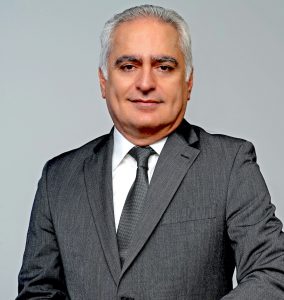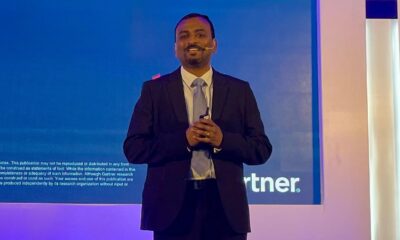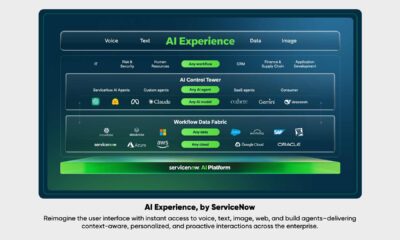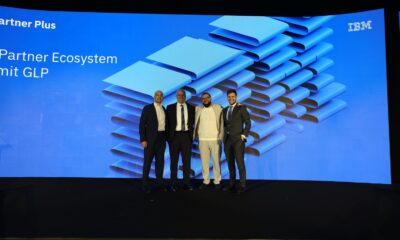Tech Interviews
NetApp: A Trusted Cloud Partner and Opportunity Creator in the Digital Transformation Era
NetApp is a global hybrid-cloud data service and data management company. It offers enterprise-level cloud, data services for the management of applications and data. The Integrator engaged in a discussion with NetApp’s high-profile personalities such as Fadi Kanafani, Walid Issa, and Maya Zakhour on the key aspects of enterprise-cloud business and its prospects in the Middle East.
By Fadi Kanafani, Managing Director
How does NetApp become a trusted partner for enterprises that chose cloud solutions?
NetApp is a cloud-led, data-centric organization supported by a global team of cloud storage specialists. We offer unmatched control, insight, simplicity, protection, and efficiency for applications in the cloud. We collaborate with the world’s leading cloud providers -AWS, Microsoft Azure, and Google Cloud to deliver native solutions in their cloud and offer our customers the best value. NetApp offers customers simplicity in moving their data from whichever platform to the cloud – be it private cloud, on-premise, hybrid, or public cloud, and the flexibility in managing their applications and data spread across different environments without the complexity. We help our customers manage their entire cloud environment and data consistently no matter where it lives.
What sorts of simplicity does NetApp include in data management through its cloud platforms?
We help customers implement the best cloud storage solutions as part of the data fabric, so businesses can manage their data holistically – no matter where it resides. NetApp offers the public cloud data storage solution that includes a complete, integrated set of data management features to protect and secure customer data, assure business continuity, simplify compliance, preserve integrity, and control access. Our analytics platform – NetApp Cloud Insights and Cloud Data Sense- provides customers with actionable intelligence across their entire IT infrastructure – on-premises and in the public cloud.
The NetApp Cloud Volumes ONTAP is our cloud-based service available on Amazon Web Services (AWS), Microsoft Azure, and Google Cloud that delivers advanced data management for file and block workloads. It helps businesses optimize cloud storage costs and increases application performance while enhancing data protection, security, and compliance. It is self-managed through NetApp Cloud Manager, our single-pane management console for all of the ONTAP instances deployed across hybrid cloud infrastructure.
By Walid Issa, Senior Manager, PreSales and Solutions Engineers – Middle East and Africa
Speak about the partnership with major cloud-space providers. How does NetApp make it beneficial for its customers?
NetApp is uniquely positioned in the market with our long-term collaboration with public cloud providers helping deliver outstanding performance and maximum portability. We provide a portfolio of services for running applications in these clouds that reduce cloud costs by up to 90%. Our platform enables customers to run enterprise applications such as SAP, Oracle, SQL, and high-performance compute jobs – for example, in oil and gas exploration and genomics.
In a partnership spanning nearly 20 years with Microsoft, we have jointly delivered innovative products that help organizations manage their data anywhere. Azure NetApp Files gives businesses world-class data management with the performance, simplicity, and cost savings you need to migrate your most challenging workloads to Azure.
Through our partnership with Google Cloud, we provide customers with agility, scalability, and security—all the critical elements to drive our customers’ digital transformation needs. NetApp integrated data services simplify how businesses migrate, run, and manage critical workloads on Google Cloud. It gives businesses the power to harness Google’s advanced analytics capabilities to help solve their toughest challenges while saving up to 70% on cloud storage costs
Our partnership with AWS goes back nearly a decade. We have shared a determined focus to help our customers build solutions, reduce costs, and innovate faster in the cloud. With NetApp’s data management capabilities integrated with the scale of AWS, businesses can migrate, build, and manage more cloud at less cost.
Tell us about the opportunities in front of small and large enterprises in the digital transformation era
The need to adapt and change direction quickly is a core principle of a digital business. Enterprise businesses would look to technology as a source of competitive differentiation in terms of improving their customer experience, automating some customer functions, and their call centers. And therefore, from a cloud perspective, they would want to combine public clouds, private clouds, and on-premises resources to gain the agility it needs for a competitive advantage.
Keep in mind that successful digital transformation relies on the intelligent use of data, Enterprise businesses can leverage data to improve the security of their products and services, and to expand customer engagement. They can also use artificial intelligence (AI) and deep learning (DL) to realize operational insights and improvements, drive decision making, ensure compliance, improve customer experience, and reduce operational costs.
Briefly compare between private and public cloud in the aspect of enterprise business
Public cloud is the on-demand availability of IT resources such as computers, storage, and infrastructure over the internet via a third-party provider or what is known today as cloud providers or hyperscalers. The private cloud is an internal equivalent to the public cloud. This is driven by the ability to easily consume and modify resource allocation through a self-service method that requires little interaction with users’ internal IT teams. Contrary to popular belief, private clouds aren’t only deployed on-premises. Private clouds might be owned by one organization and managed by another organization like local service providers in a different physical location.
Note that not everything belongs in a public cloud or a private cloud which is why so many forward-thinking companies are choosing a hybrid mixture of cloud services. Hybrid clouds offer the benefits of both public and private clouds and take advantage of existing architecture in a data center.
By Maya Zakhour, Channel Director – Middle East & Africa, Italy and Spain
How do you feel about being a known representation of women in the tech world? What advice do you have for women who aspire for a big and bold career in the tech industry?
To be recognized as a technology industry influencer is the culmination of years of hard work and dedication to my job and my constant journey of learning and adapting. But this journey doesn’t just end here – I use this recognition to encourage other young women to consider a career in technology, as the options here are endless. Building a career in technology is hard work and some women may feel reluctant to enter technology careers because they are afraid, they do not have enough technical knowledge. However, having curiosity, not technological background, is the top reason one will succeed in the tech industry. You start from the ground and build your way up – no matter what field of technology you choose.
I strongly believe that curiosity will inspire you to identify the problems and dig out the root causes. Careers in technology are not just about acquiring technical knowledge, but about demonstrating leadership and mentorship.
Tech Interviews
THE NEW ERA OF TAX COMPLIANCE: BUILDING A UNIFIED, FUTURE-READY DIGITAL ECOSYSTEM
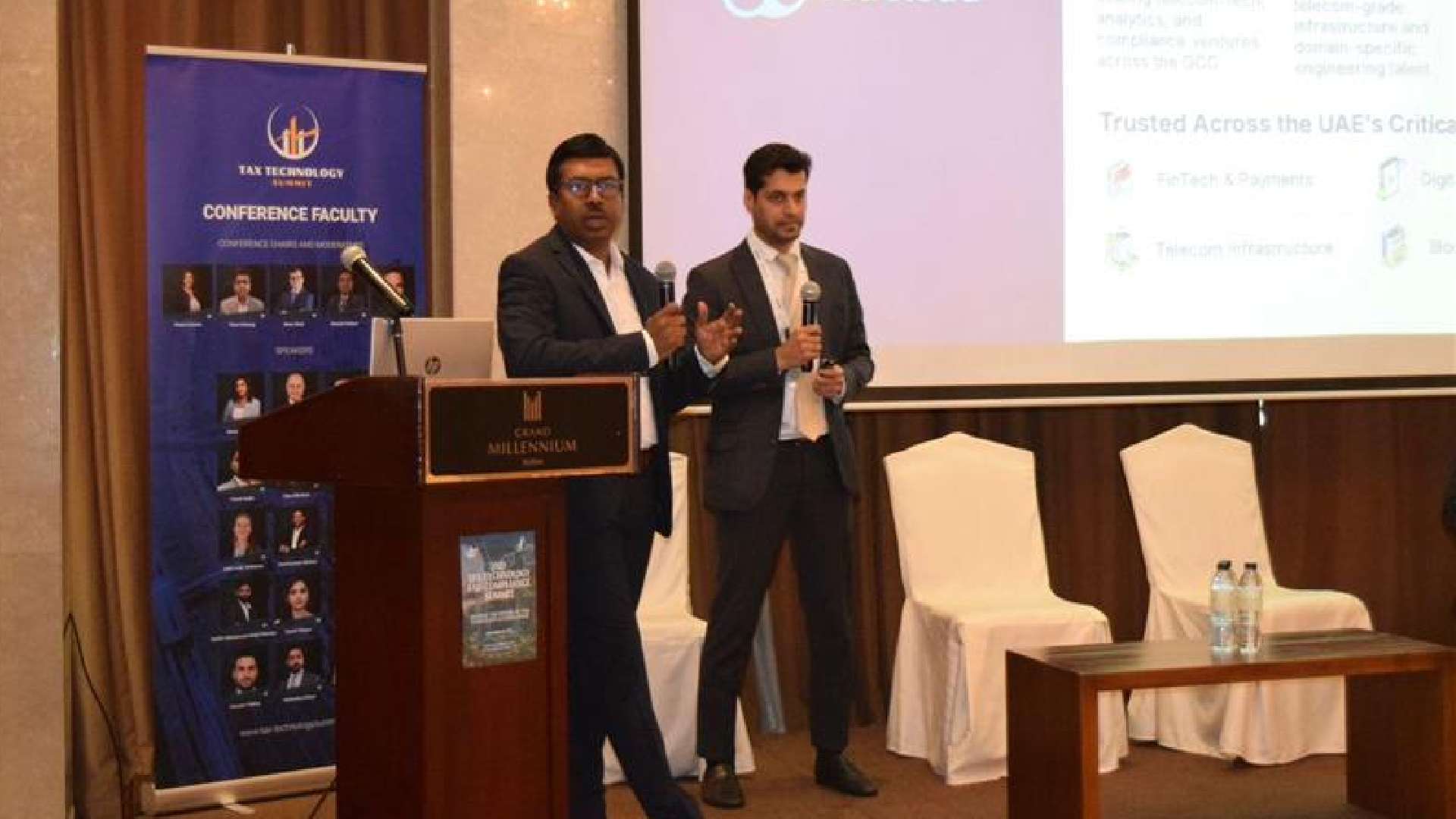
Exclusive interview with Debashish Guha Roy, Director, CovoroTM
COVORO YouCloud marked its presence as Diamond Sponsor at the Tax Technology Summit 2025, held on 06 December in Dubai, where a joint venture between the companies formally showcased its FTA-aligned e-invoicing and tax compliance platform. The event served as a key platform to highlight YouCloud’s unified approach to tax digitisation, featuring seamless ERP integrations, real-time validation, and end-to-end compliance capabilities designed for enterprises preparing for the UAE’s national e-invoicing mandate. With a strong emphasis on local delivery, in-country data hosting, and enterprise-grade security, COVORO YouCloud demonstrated how organisations can transition from standalone invoicing tools to a fully integrated, future-ready compliance ecosystem.
You mentioned that YouCloud offers a one-stop solution covering invoicing, accounts payable, reconciliation, analytics, legislation management, and tax filing. After this event, what key takeaways were you hoping the audience would leave with?
Our primary objective was to formally announce the new joint venture in the UAE market and make it clear that there is now a new local player offering a complete, end-to-end platform.
Many competitors operate in this space, but most of them deliver from outside the country or rely on offshore support models. Our key differentiator is local delivery, local data hosting, and in-country support. We wanted the audience to understand that this is not just an invoicing solution. It is a comprehensive compliance and finance ecosystem.
Another important takeaway was helping enterprises think beyond solving a single problem. Compliance is not static. What starts as invoicing quickly evolves into reconciliation, analytics, filing, litigation management, and financing enablement. That is what we have already built.
The audience at the event was extremely knowledgeable, which made communication easier. They understood the challenges ahead and could immediately see the value of a unified platform.
How do you see the broader GCC tax digitisation journey evolving in 2025 and 2026?
Globally, Europe set the precedent with the PEPPOL standard, which allows interoperability across countries. A similar journey is unfolding in the GCC.
Saudi Arabia follows its own model and is not PEPPOL-based. The UAE has adopted a PEPPOL-based framework, and Oman is expected to follow next. Over time, we will see the emergence of a GCC-wide tax interoperability framework.
This will enable smoother inter-country transactions, simplified VAT refunds, and unified compliance processes. Similar to how consumers today can claim VAT refunds easily when travelling, enterprises will experience a much simpler, more transparent system.
Because transaction records sit with tax authorities, validation becomes easier. This enables cross-border supplier financing, trade financing, and smoother compliance overall.
How do you see technology, especially AI, shaping the next phase of this journey?
Technology, particularly AI, will play a critical role in automating end-to-end compliance. It will significantly reduce errors, remove delays, and improve accuracy.
From a CFO’s perspective, AI-driven systems ensure real-time visibility, timely compliance, and reduced manual intervention. Processes that once required paperwork, reconciliation, and repetitive validation will become automated and real-time.
This directly improves compliance quality and decision-making while lowering risk.
How does YouCloud address security and privacy concerns for large enterprises?
Security and data privacy are foundational for us. YouCloud is ISO certified, GDPR-compliant, and fully aligned with the UAE’s National Information Assurance Framework (NIAF).
From day one, our approach has been sovereign by design. All data is hosted in-country. There is no external cloud hosting, no offshore disaster recovery, and no remote support from outside the UAE.
This has always been a core requirement for us, especially given our long-term presence in the region. Enterprises and government entities need assurance that their data remains within national boundaries and under strict regulatory control.
How does your solution help CFOs and senior decision-makers manage complexity?
- CFOs typically face three major challenges:
- Conducting accurate risk and gap assessments
- Implementing solutions efficiently
- Ensuring scalability for future requirements
By offering a single, end-to-end platform, we significantly reduce this burden. CFOs do not need to evaluate separate tools for invoicing, accounts receivable, analytics, or compliance reporting.
Everything operates within one framework, with one dashboard, one data model, and one compliance architecture. This simplifies decision-making and provides clear, real-time visibility across all financial and compliance functions.
Could you briefly explain how some of your core modules work, such as e-invoicing and accounts payable?
The e-invoicing module collects invoice data from various ERP and accounting systems and converts it into the format required by the Federal Tax Authority (FTA).
Each ERP or accounting system produces data in a different format, while the FTA expects a standardised structure. YouCloud acts as an intelligent adaptor, performing data homogenisation. If mandatory data is missing, the system flags it and sends it back for correction. Only validated, compliant data is submitted to the FTA.
For accounts payable, the focus is on managing input and output VAT accurately. Traditional processes require manual extraction, spreadsheet matching, and reconciliation. Our platform automates this process by validating transactional data in real time, removing the need for manual intervention and reducing reconciliation errors.
Where do you see YouCloud’s growth in the UAE and GCC over the coming years?
In the UAE alone, we are targeting at least a 20% market share, which represents a significant volume of invoices and transactions.
The initial phase focuses on B2B and B2G transactions above the AED 50 million threshold. The next phase will expand to all enterprises, followed by retail and B2C transactions.
Retail presents the most complex compliance challenge due to volume and diversity. To address this, we are developing a hardware-based solution for retailers. Many small retailers are not equipped to manage API integrations, so we provide a simple plug-and-play device that connects to their existing systems and links directly to our backend.
This approach removes complexity for small businesses while ensuring full compliance. The B2C phase will generate the highest invoice volumes and is the most challenging, but it is also where our combined hardware and software strategy will set us apart.
Tech Interviews
Value Strategy, App and Cloud Platforms: Exclusive Interview with Ed Hoppit, EMEA Director, Red Hat

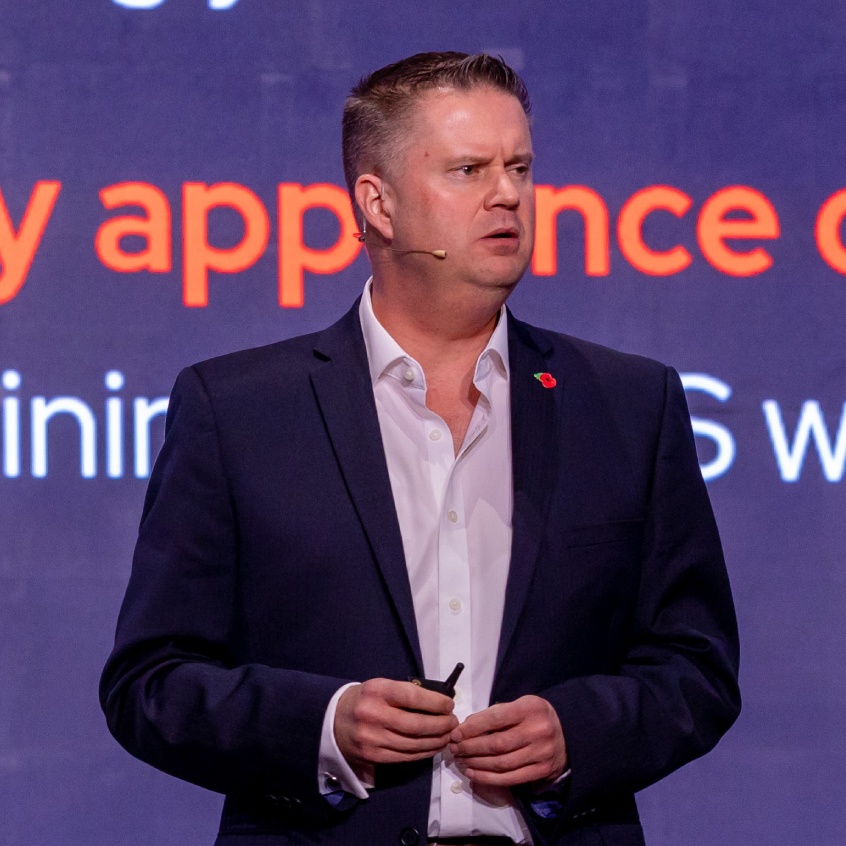
- How is Red Hat aligning its technology strategy with Saudi Arabia’s Vision 2030 and the country’s push toward large-scale digital transformation?
Red Hat’s approach enables businesses to innovate freely, operate securely, and accelerate their digital transformation, all of which align with Saudi Arabia’s Vision 2030. Our emphasis on open-source technologies, hybrid cloud, and AI-driven automation directly advances the Kingdom’s goal of shaping a technologically driven, diversified, and knowledge-based economy. By working with partners in the public and private sectors, we help them modernize IT infrastructure, enhance digital skills, and develop sovereign cloud capabilities that meet local regulatory and data-residency requirements. Red Hat offers Saudi businesses an open, flexible, and scalable platform that enables them to drive innovation while maintaining control, transparency, and compliance, all of which are essential components of Vision 2030’s digital agenda. Our ultimate objective is to become a trusted technology partner that helps Saudi companies adopt sustainable innovation models, develop local capabilities, and compete confidently in the global digital economy.
- In what ways does Red Hat’s open-source model help drive cross-industry collaboration and spark faster innovation across the region?
Red Hat’s open-source model is founded on the principle that innovation accelerates when individuals work together. Businesses, developers, and governments must work together to tackle common challenges through open technology development rather than working in isolation. This strategy dismantles conventional barriers to innovation, enabling organizations to jointly create, test, and refine solutions on open, secure platforms. Open source not only accelerates innovation but also promotes trust, flexibility, and interoperability, as the code remains transparent and accessible for everyone. At Red Hat, our mission is to transform community-driven innovations into enterprise-ready versions so that organizations can confidently deploy them at scale while benefiting from a global ecosystem of ideas, partners, and expertise. Our open-source model thereby turns innovation into a shared journey, allowing industries to advance jointly rather than separately.
- How are you helping enterprises achieve efficiency and modernization through automation and virtualization?
At Red Hat, we help enterprises maximize efficiency and drive modernization by simplifying how they deploy, automate, and manage IT across hybrid and multi-cloud environments. When it comes to efficiency, our latest innovations make operations faster and smarter, whether it’s RHEL 10, which introduces image mode, or RHEL Lightspeed AI assistant, which simplifies deployments and guides users through complex tasks. The Ansible Automation Platform, now integrated with Terraform and powered by Lightspeed, allows organizations to automate at scale by reducing manual work and improving consistency across environments. With Managed OpenShift available across all major cloud providers, businesses can simplify operations and scale seamlessly through OpenShift Lightspeed. For modernization, Red Hat offers a proven pathway for enterprise evolution through our four-phase virtualization strategy (validated by large-scale success stories like Emirates NBD’s 9,000+ VM migration) that helps organizations modernize without disrupting workflows. Tools like Event-Driven Ansible enable policy enforcement as code, ensuring standardized, secure, and compliant IT operations. Lastly, the Red Hat Advanced Developer Suite further enhances productivity by reducing complexity and accelerating deployments. Together, these solutions empower enterprises to modernize their cloud infrastructure, improve operational efficiency, and unlock resources for future AI-driven innovation, all while maintaining flexibility, security, and control.
- With data sovereignty becoming increasingly important in the Middle East, how is Red Hat helping organizations in Saudi Arabia maintain compliance and control over their data while adopting hybrid and AI-driven solutions?
In markets like Saudi Arabia, where technology and regulatory frameworks are constantly evolving, data sovereignty stands as a central pillar of national digital strategies. Organizations are required to maintain a balance between innovation and responsibility, enabling agile growth while safeguarding security, privacy, and compliance. In line with this, our Open Hybrid Cloud is designed to help enterprises ensure complete control over their data while leveraging the scalability of cloud technologies. Similarly, our solutions such as Enterprise Linux (RHEL) and OpenShift equip enterprises with secure, standardized infrastructure to manage workloads across private, public, and sovereign clouds, while ensuring sensitive data remains compliant with local regulations. With transparency and interoperability at its core, Red Hat’s technologies enhance trust and accountability. In the Saudi Arabian market, we closely collaborate with partners and customers to build localized cloud and AI ecosystems that meet national requirements. Our key goal is to enable enterprises to innovate confidently within regulated environments.
- How do you plan to expand Red Hat’s role in the Saudi and MENA markets in the coming years?
Red Hat is actively working towards expanding its presence and impact across Saudi Arabia and the broader MENA region. Over the next few years, we intend to strengthen local partnerships, invest in talent development, and extend collaboration with government and enterprise customers to accelerate digital transformation, in accordance with Vision 2030. We will continue to enable organizations to build AI-ready, hybrid cloud environments that are secure, scalable, and compliant with local data-sovereignty requirements. This requires expanding our network of local partners and system integrators to bring Red Hat’s technologies closer to our clients. Additionally, we are supporting certification and skills-enabling initiatives to equip the Kingdom’s emerging IT workforce with the resources and knowledge necessary to drive innovation using open-source technologies. As the region moves towards a diversified, knowledge-driven, and digitally sovereign economy, Red Hat hopes to remain a long-term technology partner in this progress.
Tech Interviews
How Aspen Medical is Leveraging AI to Deliver Healthcare in Crisis Zones and Remote Regions

Exclusive Interview with Glenn Keys, Founder and Executive Chair, Aspen Medical

Aspen Medical has a strong legacy in humanitarian and military healthcare. How does AI fit into your long-term vision for transforming healthcare delivery, particularly in the UAE and MEA region?
Everything we do at Aspen Medical is health-led and technology-enabled. Our existing systems, governance, training and so on, are about the delivery of high-quality and safe care wherever our clients need us. Technology, including artificial intelligence (AI) enables us to do this. At Aspen Medical, we see AI as an integral part of our strategy to reimagine healthcare access and delivery. In the UAE and broader MEA region, rapid development is creating new demands for precision, resilience and scalability in health systems. AI will enable us to meet those demands in ways that are faster and smarter, for example, embedding AI into remote diagnostics, predictive modelling and digital triage, especially in primary and emergency care settings. In the UAE, where digital transformation is a national priority, we’re aligning with initiatives like the National Strategy for Artificial Intelligence 2031. AI strengthens our capacity to deliver care that is accessible, responsive and tailored to diverse populations.
In humanitarian zones where traditional infrastructure is limited or absent, how can AI-powered healthcare solutions help close the gap in access, diagnostics, and continuity of care?
In regions facing instability, displacement or lacking basic infrastructure, AI can help overcome barriers that have long blocked access to care. Using AI-enabled triage tools, speech recognition and machine translation, language and literacy barriers are reduced whilst guiding patients toward appropriate care pathways. AI technologies that support health workers on the ground – scanning images, analysing vitals and supporting early intervention – can be embedded into mobile devices allowing deployable clinical teams to operate in even the most remote or disconnected settings. Combined with cloud-based health records, AI can ensure continuity of care across humanitarian corridors. It’s not going to be about replacing clinicians; it will be about improving outcomes where they are needed most.
Deployable healthcare is a core pillar of Aspen Medical’s work. How is AI being used to prepare healthcare professionals for unpredictable, high-stress environments such as disaster zones or military operations – and what outcomes have you seen so far?
When lives are on the line, preparation is everything. That’s why we’re working towards integrating AI into the way we train and prepare our deployable healthcare teams. Our goal is to enable clinicians and responders to experience realistic, high-stress environments ranging from natural disasters to military deployments before they ever set foot in the field. By developing AI-powered virtual reality and adaptive learning platforms, we aim to replicate mass casualty incidents, austere conditions, and trauma scenarios. This technology will allow us to track decision-making under pressure and tailor learning in real time. We’re striving to build systems that enhance response times, improve triage accuracy, and boost confidence in the field. Ultimately, we’re working towards using AI not only to strengthen operational readiness but also to reduce burnout and build psychological resilience before deployment.
What role does AI play in enhancing the efficiency and responsiveness of mobile clinics and field hospitals? How is Aspen Medical applying these technologies to support remote workforce health in sectors like oil & gas and humanitarian aid?
AI is beginning to play a supportive role across our mobile clinics and field hospitals, helping teams make better, faster decisions in complex environments. At Aspen Medical, we’re exploring how AI can assist with triage, inventory management, logistics, and reporting, always with clinicians and field experts in control. Early algorithms are helping us analyse trends in patient data and resource use, offering insights that complement, not replace, human judgement. In sectors such as oil and gas, AI tools are being trialed to identify emerging health patterns, like fatigue or heat stress, by combining wearable and clinical data under the supervision of our medical staff. In humanitarian and disaster response settings, these systems are helping improve coordination and data continuity as populations move across regions. Our focus is on using AI responsibly to enhance situational awareness and operational resilience, keeping humans at the centre of every decision that affects care.
Is Aspen Medical collaborating with governments or local health authorities to scale AI-driven solutions across the region as well as globally? What have been the most promising outcomes or lessons from these partnerships?
Yes, we are working directly with health ministries, defence forces and regulators across the UAE and other MEA countries to localise AI solutions that meet national goals. These partnerships are built on co-design: we bring our clinical expertise and global experience, and local authorities bring contextual insight and public health priorities. The most promising outcomes stem from long-term trust. When local systems are involved from the start, adoption increases and impact is sustained.
What would you say are the biggest barriers to AI adoption in healthcare today, and how can companies like Aspen Medical ensure these technologies are deployed ethically and equitably across diverse communities?
Ethical deployment is the challenge and the opportunity. AI is only as effective as the data behind it, and in healthcare, bias or poor-quality data can be dangerous – it is vital that there are strict protocols to validate every AI tool. We prioritise transparency, clinical oversight and community input. We also advocate for inclusive AI, built with diverse datasets that reflect different genders, ethnicities and disease profiles.
Looking ahead, which emerging AI technologies do you believe have the greatest potential to revolutionize healthcare? How do you see Aspen Medical’s role evolving as AI becomes more integrated into healthcare infrastructure?
We believe technologies like generative AI, clinical large language models and AI-assisted imaging will drive the next wave of transformation. Imagine a frontline clinician dictating hands-free notes, while a real-time AI scribe prepares documentation and decision-support summaries. Or an emergency responder receiving instant feedback from an AI model scanning a wound image. Our goal is to leverage federated learning so AI systems can learn from decentralised, privacy-protected data sets. This approach will be critical for delivering safe, compliant, and coordinated care across borders. Our role is to be the connector: bringing together best-in-class technology, robust clinical practice and local insight to deliver safe, smart and scalable healthcare.
Finally, as a founder, what drives your commitment to innovation in healthcare? What legacy do you hope Aspen Medical leaves in the AI healthcare space, especially in regions facing complex and urgent challenges?
Innovation is in Aspen Medical’s DNA. We started by asking: How do we deliver high-quality care where others can’t or won’t go? Today, AI gives us powerful new ways to answer that question. Vitaport, our flagship workplace health and wellbeing platform, developed by Aspen Medical, is the embodiment of that vision. Using agentic AI grounded in clinical governance to deliver personalised care, real-time insights and behaviour-shaping support. But whilst our tools evolve, our purpose remains the same: people are always at the centre. I’m driven by the belief that healthcare must be a force for equity. AI is a tool, not a destination – it helps us extend our reach, deepen our impact, and build systems that are smarter, fairer and more human. The legacy I hope we leave is simple: that we used technology not just to innovate, but to uplift. Especially where the stakes are highest.
-

 Tech News1 year ago
Tech News1 year agoDenodo Bolsters Executive Team by Hiring Christophe Culine as its Chief Revenue Officer
-

 VAR8 months ago
VAR8 months agoMicrosoft Launches New Surface Copilot+ PCs for Business
-

 Tech Interviews2 years ago
Tech Interviews2 years agoNavigating the Cybersecurity Landscape in Hybrid Work Environments
-

 Tech News5 months ago
Tech News5 months agoNothing Launches flagship Nothing Phone (3) and Headphone (1) in theme with the Iconic Museum of the Future in Dubai
-

 Tech News2 years ago
Tech News2 years agoBrighton College Abu Dhabi and Brighton College Al Ain Donate 954 IT Devices in Support of ‘Donate Your Own Device’ Campaign
-

 Editorial1 year ago
Editorial1 year agoCelebrating UAE National Day: A Legacy of Leadership and Technological Innovation
-

 VAR1 year ago
VAR1 year agoSamsung Galaxy Z Fold6 vs Google Pixel 9 Pro Fold: Clash Of The Folding Phenoms
-

 Cover Story9 months ago
Cover Story9 months agoUnifonic Leading the Future of AI-Driven Customer Engagement






